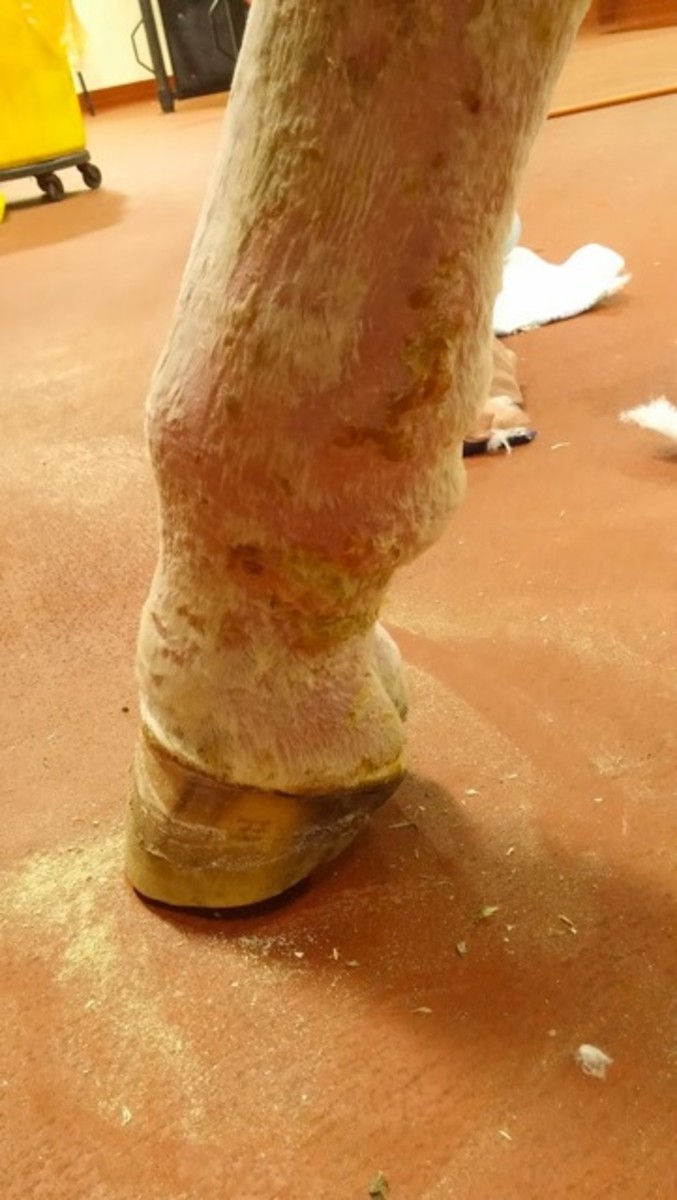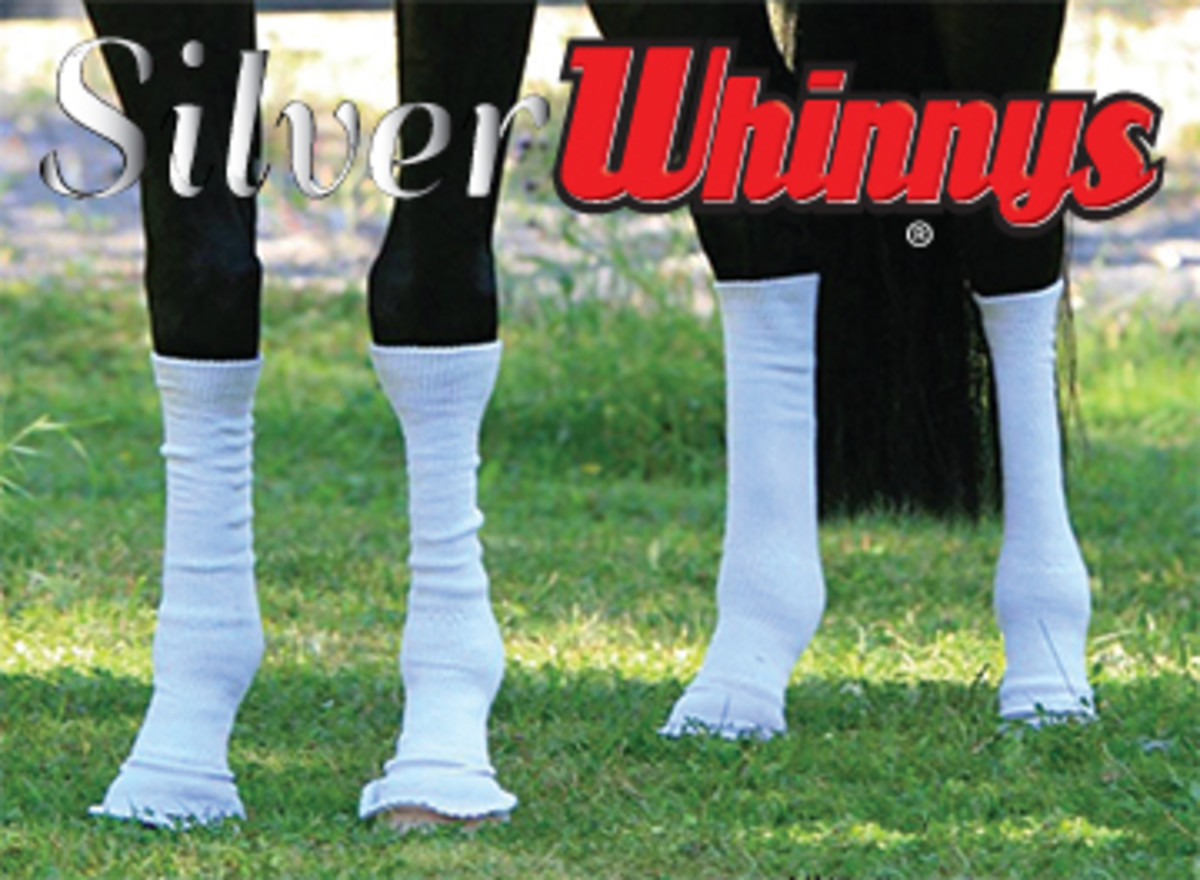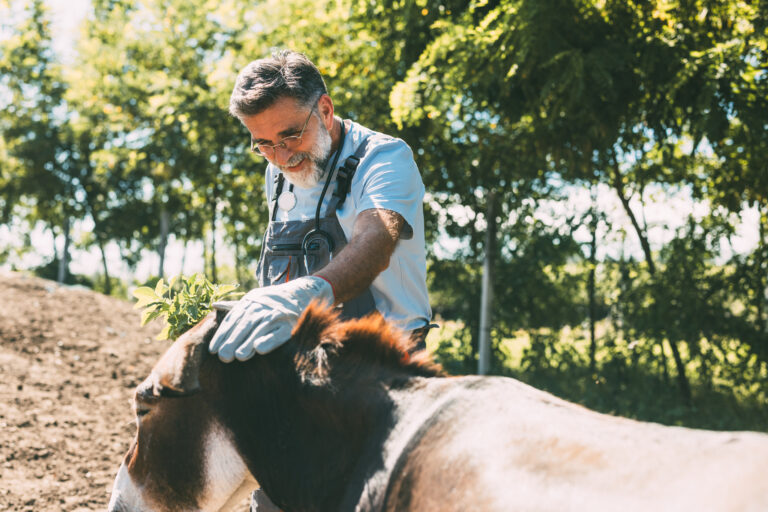
“I never compression wrap a horse with cellulites or lymphangitis. I demonstrate how a wrap is not the right choice by asking a client to lightly press a finger down on their hand and tell me what happens. The depressed area turns white. They can see how little pressure it took to have blood flow leave the area and immediately reduce circulation where pressure was applied,” said FEI sport horse veterinarian Stephen Soule, VMD, of Palm Beach Equine Clinic in Florida.
“Heavy compression stops the motion of fluids. This is easy to understand when you see swelling pool above the wraps. Heavy compression bandages can add problems, creating pressure sores on joints and opening new sources of infection while taking away oxygen, inhibiting healing and impeding fluid from moving up and down the legs. Also, wraps don’t breathe and I want air reaching broken skin tissue, to aid in healing.”

The difference between cellulitis and lymphangitis is that in lymphangitis, it’s not blood vessels but lymphatic vessels affected. Inflamed lymphatic vessels heal with permanent scaring, which creates chronic closure of the lymph vessels. They can no longer serve their function moving lymphatic fluids up the leg to be processed by the body. Cellulitis is inflammation of tissue in and beneath the skin. Blood vessels, despite damage or trauma, can heal and make alternate blood vessels in different directions. Once lymph vessels scar, they can no longer remove fluid for the rest of an animal’s life. The differences are not as important as the need for very rapid, aggressive delivery of therapy required in both cases to increase the chance of a positive outcome. Cellulitis and lymphangitis are critical medical emergencies.
Both are caused primarily by bacterial infection, but some can also be fungal and some can be from bacteria other than staphylococcus. Many times the source or origin of the infection can’t be seen. We know that chronic dermatitis, wounds open to infection, small punctures caused by thorns in the pasture, fly bites, and a slight scratch, can all serve as origins of these conditions. I’ve used Silver Whinnys for years in my practice, and they can be a tremendous asset in protecting legs from these hazards. They are a good bandage for open exposed tissue, dermatitis, wounds or sores,” said Soule, “because the silver provides a clean environment around a leg and the Sox breathe.
“Nine out of ten times,” Soule added, “penicillin/ampicillin antibiotics treat gram-positive staph and strep infections. Gentamicin has a more powerful effect on other gram-negative bacteria like E. coli, but if you have horse lying down in manure, it may not be just strep causing the infection. I use an anti-inflammatory such as phenylbutazone or Banamine to help with pain. My goal is to handle the infection, ease the pain and get a horse moving so fluids are moving again in the legs as rapidly as possible. The faster I can get a horse sound and exercising, the trot being the most therapeutic movement for fluid motion, the happier I am.
“I also use a Jobst Pump, which assists in moving fluids,” he added. “The goal is to get a horse moving since time is essential in diminishing damage to blood and lymphatic vessels. A lame horse can benefit from a Jobst Pump, which is like a blood pressure cuff. The pump compresses a leg for a few minutes and releases compression for a few minutes. Treatments last 20-30 minutes, three to four times daily, which is easy on a handler/owner because the horse can stand in the stall, eat some hay and wear the Jobst Pump. Horses that have suffered bouts of cellulitis and lymphangitis will most likely have another attack, so a Jobst Pump is a good tool to have on hand. The Sox provide the protection needed over open tissue to promote healing, but without heavy compression. A horse can safely wear these Sox in their pasture and get the exercise needed to keep lymphatic fluids moving.”
“Silver Whinnys are meant to be safe on a horse out in pasture,” said Sox For Horses Inc. President Raymond Petterson, “but I recommend an owner/handler/vet contact us to discuss if a custom Sox should be constructed for protection while a leg is swollen, to ensure a light and safe level of compression that does not stop valuable circulation. When an edema is gone, you can return to using regular Silver Whinnys, which will reduce the bio-burden, dirt, debris and insects near pre-existing wounds/sores.”
Petterson said he gets at least one weekly phone call from owners asking if Silver Whinnys can help horses with cellulitis or lymphangitis. “I don’t know if conditions are becoming more common or if Silver Whinnys’ reputation for helping owners handle the secondary infections is becoming more recognized,” said Petterson. “I wish the Sox were put to use faster because some case photos, particularly lymphangitis, are heartbreaking. I’m sure there are as many frustrated vets who wish they had been called at the onset of symptoms as there are times I wish Silver Whinnys had played an earlier role in leg protection.”

Soule said, “Veterinarians are on the front line when it comes to educating clients about these conditions prior to their appearance: We know our client’s horses. We can assess a horse’s potential to come down with these things.
Key points include:
1. Sudden and unexpected swelling
2. A high fever
3. Pain to touching or palpating
4. A three-legged lameness, where the horse can’t put the leg down on the ground and is avoiding you touching him.
5. Minutes and hours can make a difference to permanent damage.
6. Let them know what you can do to immediately help their horse if this does happen, driving home that it requires a veterinarian’s immediate attention.
See the “Studies” page at www.soxforhorses.com. Sox For Horses, Inc. offers Veterinarians a 25% discount. Sox For Horses can be reached at soxforhorses@gmail.com or 850-907-5724.
Dr. Steve Soule is described by Palm Beach Equine Clinic as “a perfect example of how a dedicated and passionate veterinarian can make a difference in the sport horse industry.” The author of numerous publications and lectures, Soule has been an active participant in the United State Equestrian Team as Team Veterinarian at competitions throughout the world including the World Cup Finals, Endurance World Championships, and since 1978 has traveled with USET in Europe and North America, including many trips to France, Belgium, Switzerland, Germany and Canada. Soule served as a member of the Atlanta Veterinarian Commission for the Olympic Games. In 2009 Soule was the recipient of the Marty Simensen Award given to individuals whose life work has been dedicated to the unwavering commitment to the welfare and protection of horses and/or have saved equine through an act of courage and resolve during a crisis situation.




